As an animal lover and biologist (on paper), it’s no surprise that our yard is very wildlife-friendly. Not only do I love to watch the birds and other critters, but our indoor cats do, as well. Many of my upcycling projects were made specifically for backyard habitat, including feeders, baths, and houses. I learned about designating one’s yard as Certified Wildlife Habitat many years ago, but wasn’t sure how well-known that program was.
Through the National Wildlife Federation’s Garden For Wildlife Program, anyone can have their yard designated as Certified Wildlife Habitat.
It is, admittedly, something of an honor system certification process, but still a fun exercise to go through if your a bird and critter lover like me!
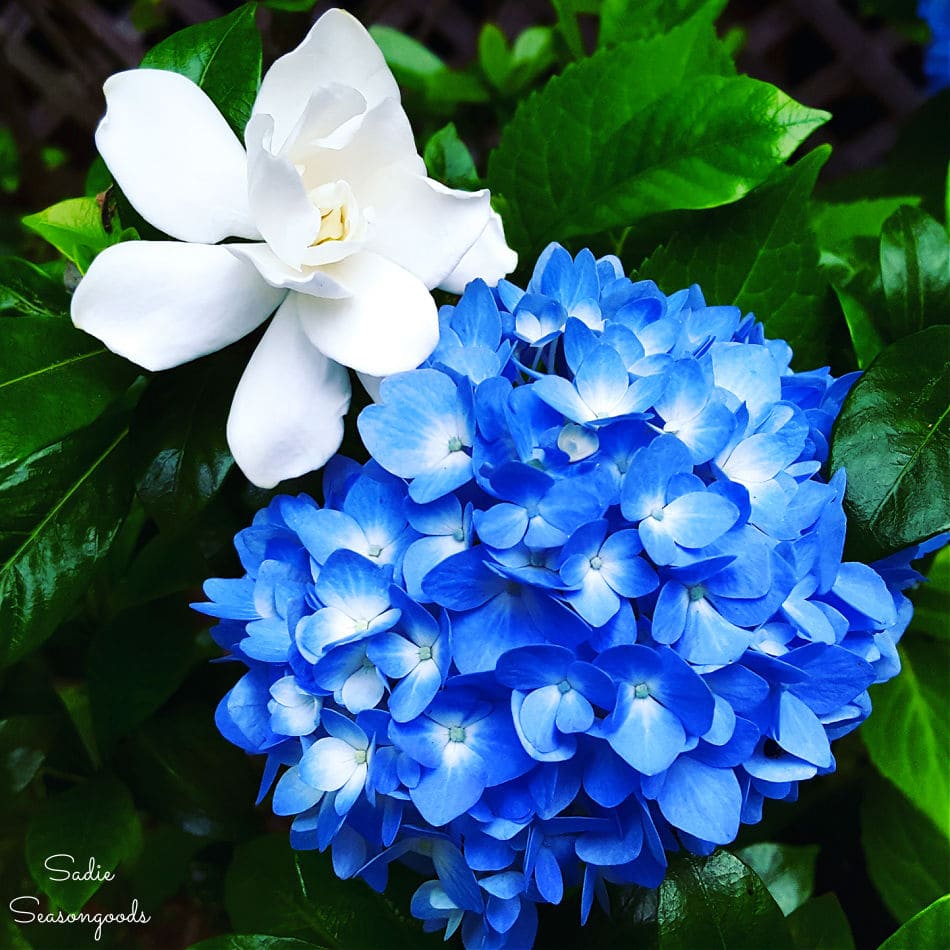
And long-time readers may realize that I wrote a blog post in 2014 about Certified Wildlife Habitat. But I thought it was more pertinent than ever to do a fresh new post on it as we celebrate the 50th Anniversary of Earth Day (today!) while looking for activities to do at home.
In order to certify your yard as backyard habitat, you need to provide multiple elements that fulfill the following needs:
- Sources of Food;
- Water Availability;
- Sources of Cover;
- Places to Raise Young; and
- Use Sustainable Practices in Your Yard.
Truthfully, the fifth bullet was not required back in 2014, so the certification process has been updated over the years as well. Even more reason for me to publish a new blog post on it!
I’ll take you through everything we’ve done over the years and show you lots of pretty (and not so pretty!) photos from our yard. And maybe, just maybe, you’ll be inspired to designate your yard as Certified Wildlife Habitat, as well!
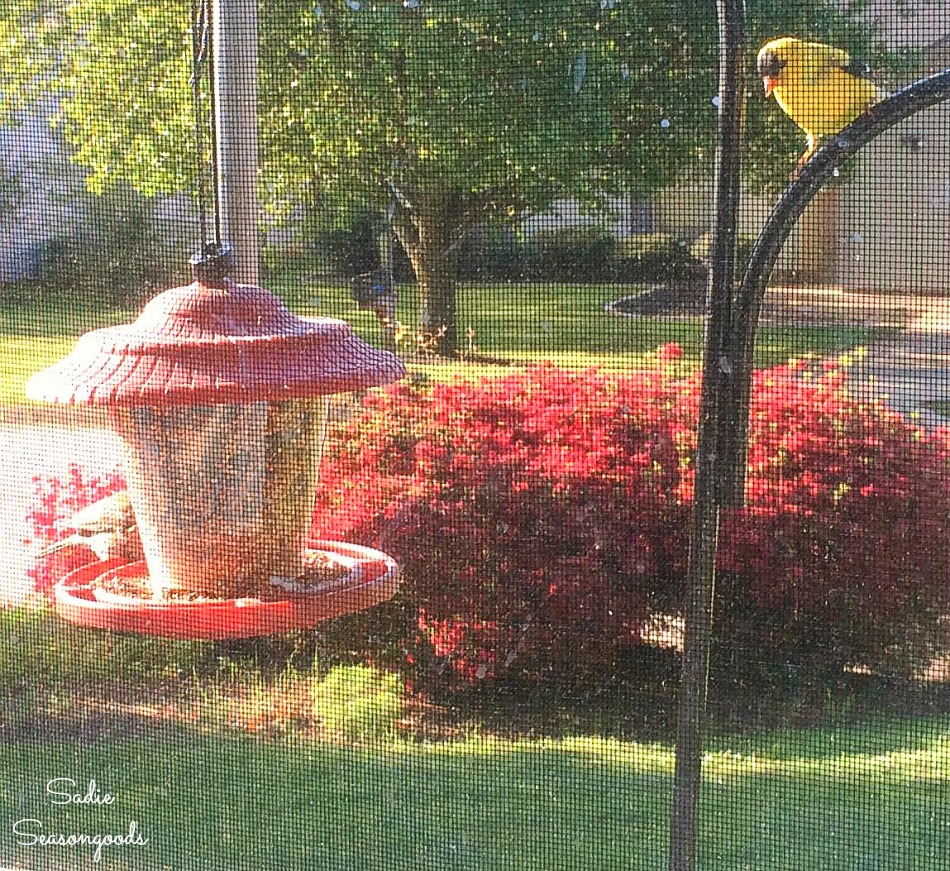
This post contains affiliate links for your crafting convenience. As an Amazon Affiliate, I earn from qualifying purchases. All blue, bold, and underlined text is a clickable link, either to a product or to a related post.
Certified Wildlife Habitat: Sources of Food
Perhaps the most common element of backyard habitat is bird feeders. Over the years, we’ve gone through numerous types of feeders: Standard seed feeders, finch feeders, suet cages, peanut wreath cages, etc.
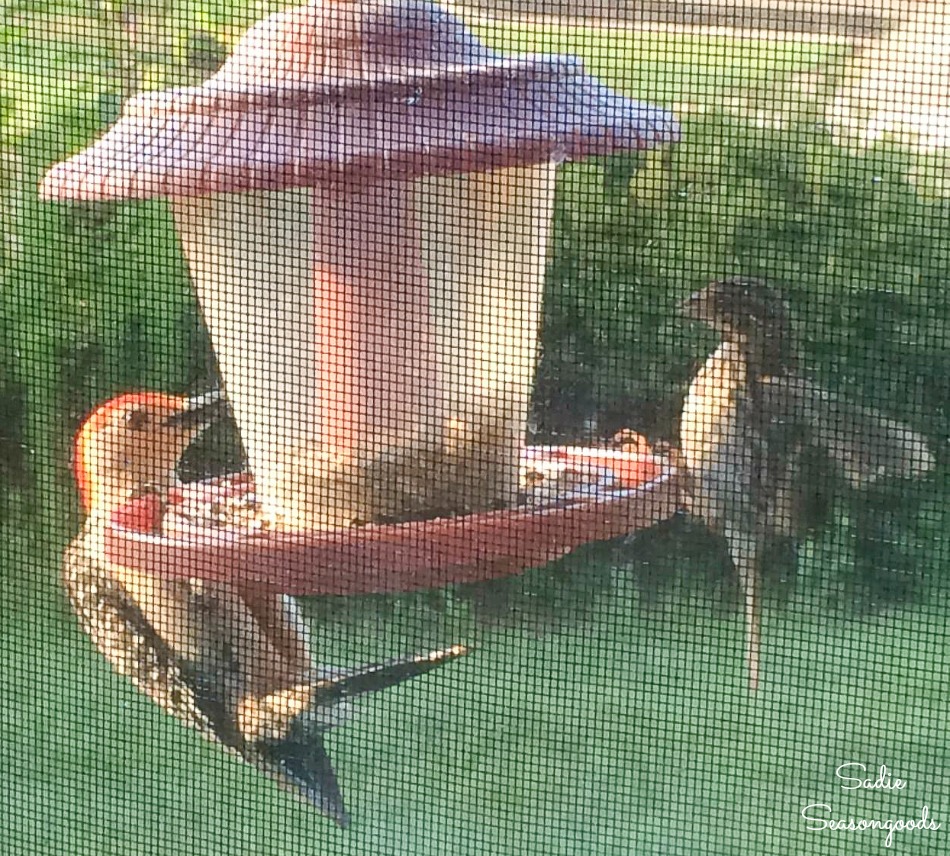
But backyard habitat certainly isn’t limited to birds. Fruit trees and bushes and other garden vegetables provide food for wildlife, whether you like it or not! And colorful flowers provide food for pollinators, as well.
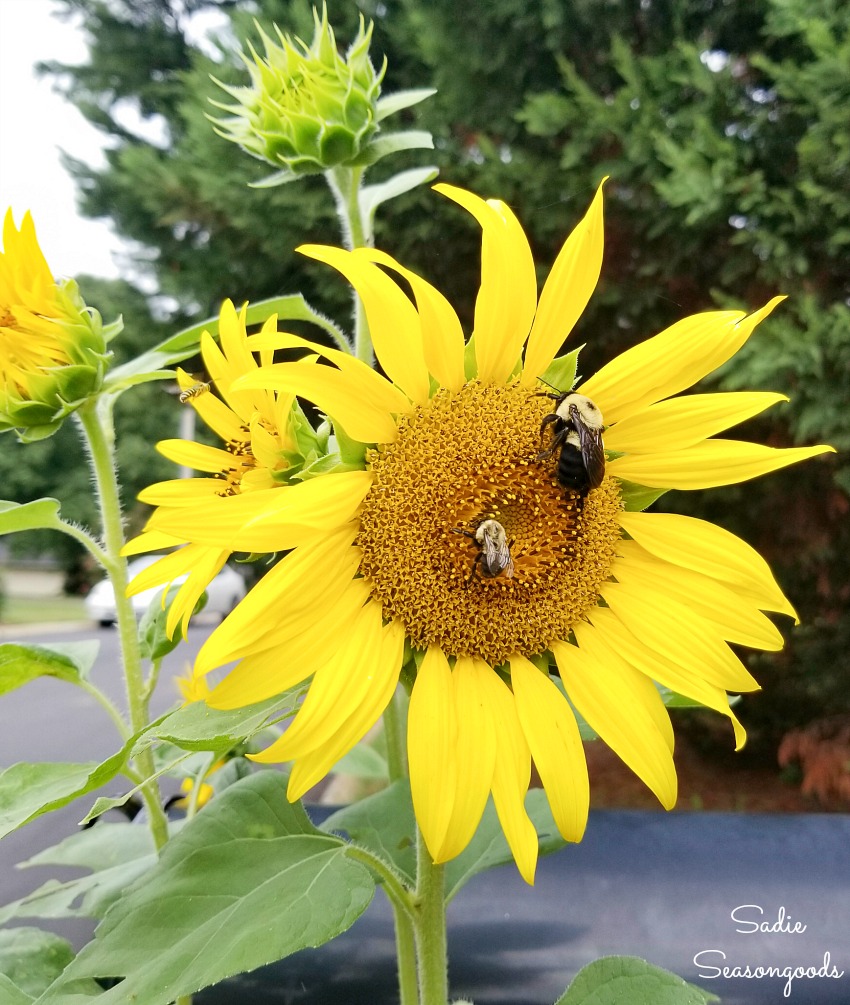
And, of course, there are countless ways to upcycle things into bird feeders, too. This suet feeder from a coffee mug gets cleaned out repeatedly each winter. I honestly need to make several of them at a time!
Certified Wildlife Habitat: Sources of Water
In addition to providing sources of food, you must also provide sources of water for wildlife to receive the designation. And while I have one traditional bird bath, it is fairly deep.
Which means larger birds (like blue jays and cardinals) and small mammals (like squirrels) use it to drink from. I’m sorry I don’t have any good photos of them using it, but I love to watch them perch and drink!
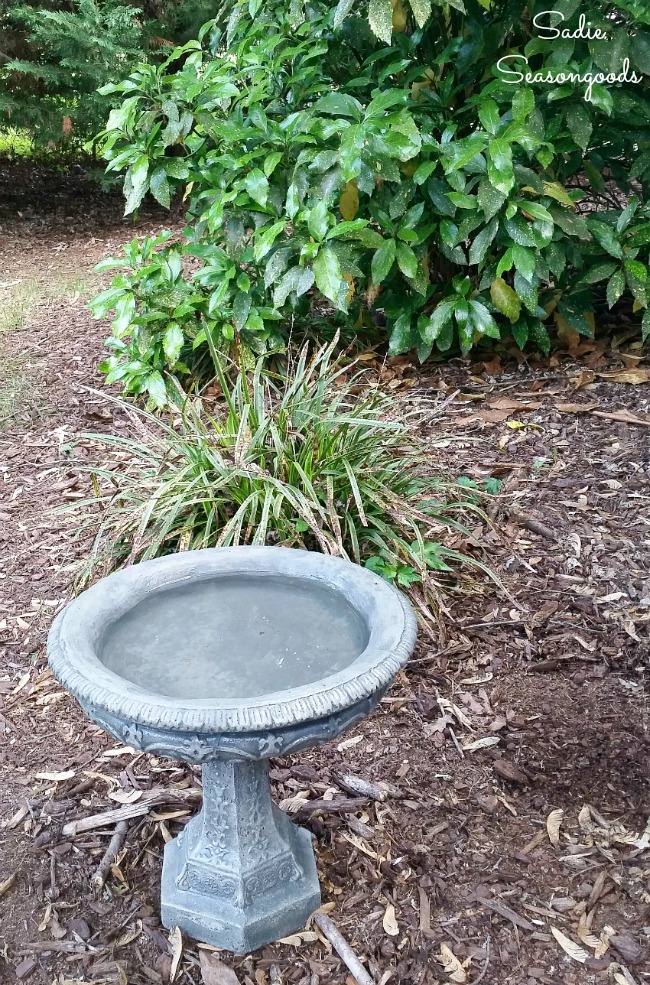
But, I have also created a couple of different bird baths from thrift store pieces. For instance, this hanging bird bath is super shallow and easy to clean.
I also married two thrift store pieces to create this standing bird bath, which is also very shallow and easy to clean.
Interestingly enough, though, our yard birds prefer to use the downspout splashblocks under our gutters as bird baths! We have both cement and plastic versions at all four corners of our house, and they use them as baths constantly.
Certified Wildlife Habitat: Sources of Cover
The next two aspects of Certified Wildlife Habitat have a lot of overlap: Sources of Cover and Places to Raise Young. But, specifically to Sources of Cover, having lots of mature trees or dense shrubs and bushes is a great way to check this box on the list.
Our backyard is actually lined with cypress trees that are alive with countless birds and squirrels.
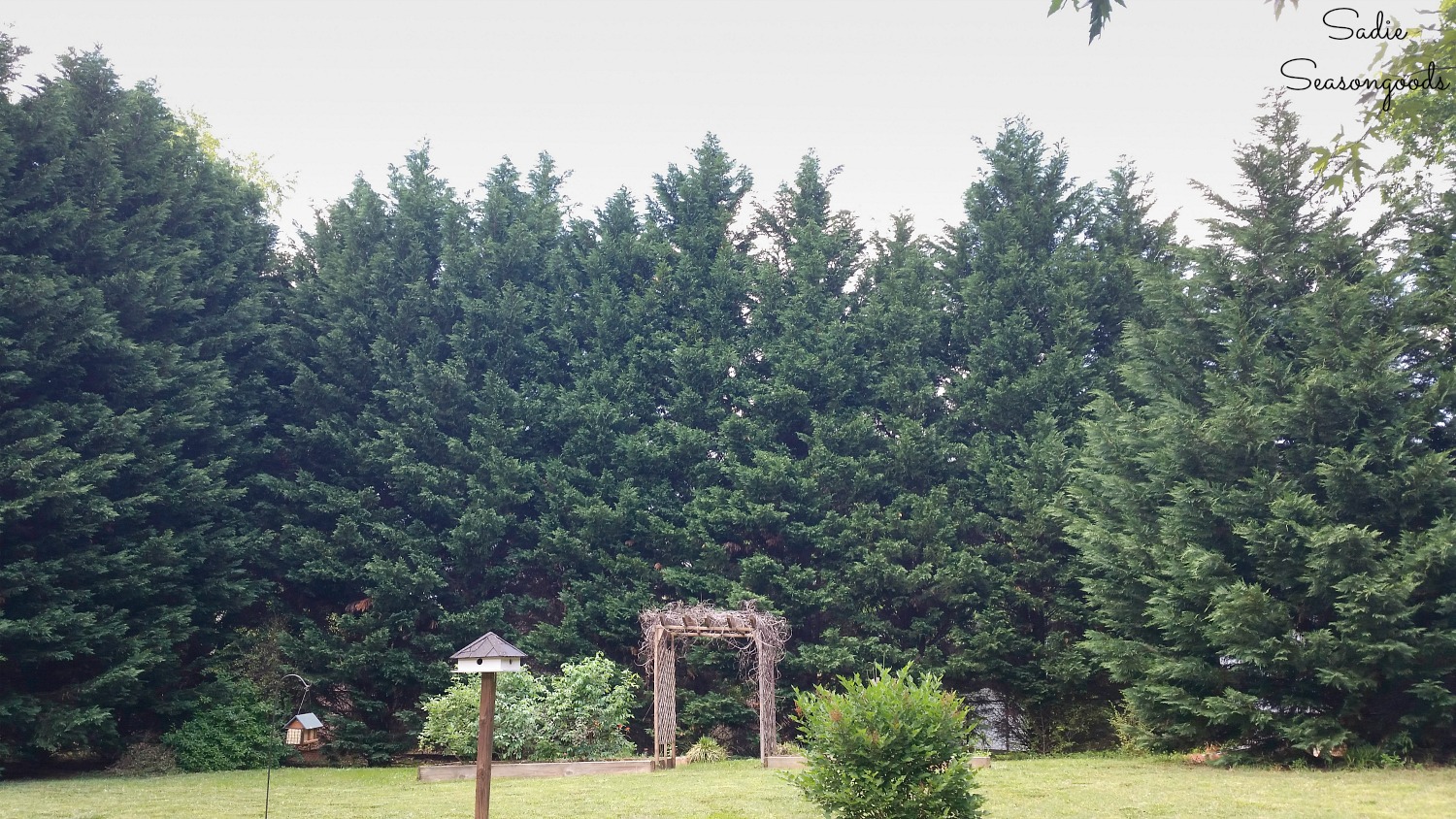
As you can see, we have a bird house in the center of the yard. Surprisingly enough, we always have a nesting pair of bluebirds each Spring! Even though it’s not a “traditional” bluebird box.
In addition to mature trees, I’ve also created several types of bird houses by upcycling things, too. While I’ve upcycled a log cabin bank as a bird house and fixed up a broken bird house with barnwood, neither of those were my favorite bird house project.
For my favorite bird house project, I repurposed a wooden tissue box and old license plate!
Needless to say, we provide ample sources of cover in our yard for bird habitat and other wildlife habitat!
Certified Wildlife Habitat: Places to Raise Young
The numbers of baby birds and baby bunnies that our yard has produced is, well, pretty impressive. In our bird houses, we’ve had wrens, bluebirds and chickadees (that I know of).
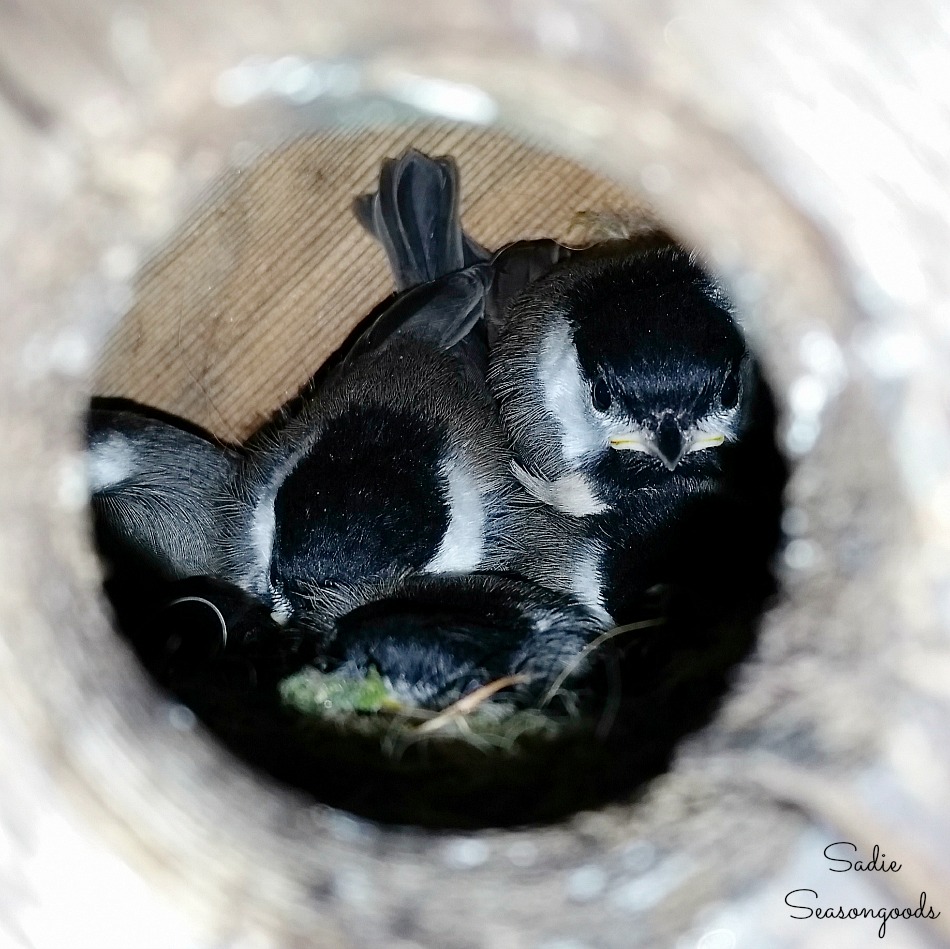
And I also know that our brown thrashers have successfully raised young, as I’ve watched their babies hop around with mom and dad. I’m just not 100% sure where their nests have been.
As our calendars flip to March and April, mowing season begins. But both our front and back lawns have been home to rabbit nests, so we have to do walk overs before actually mowing.
Sometimes, they’re made of dried grasses…
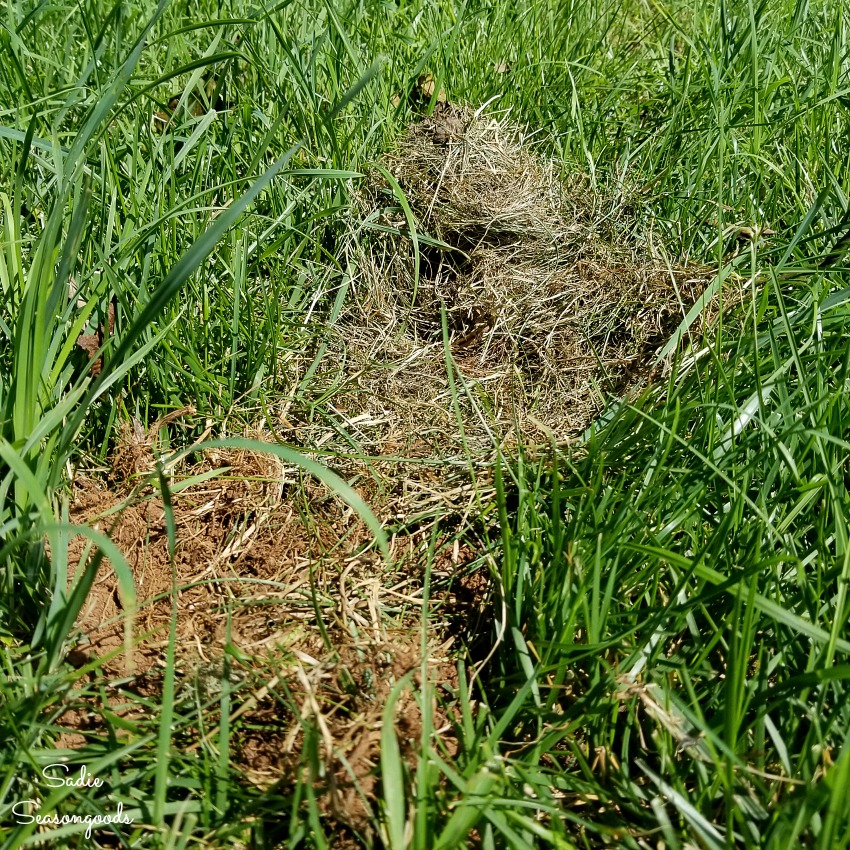
But other times, mama rabbit uses her own fur for the nest, as well.
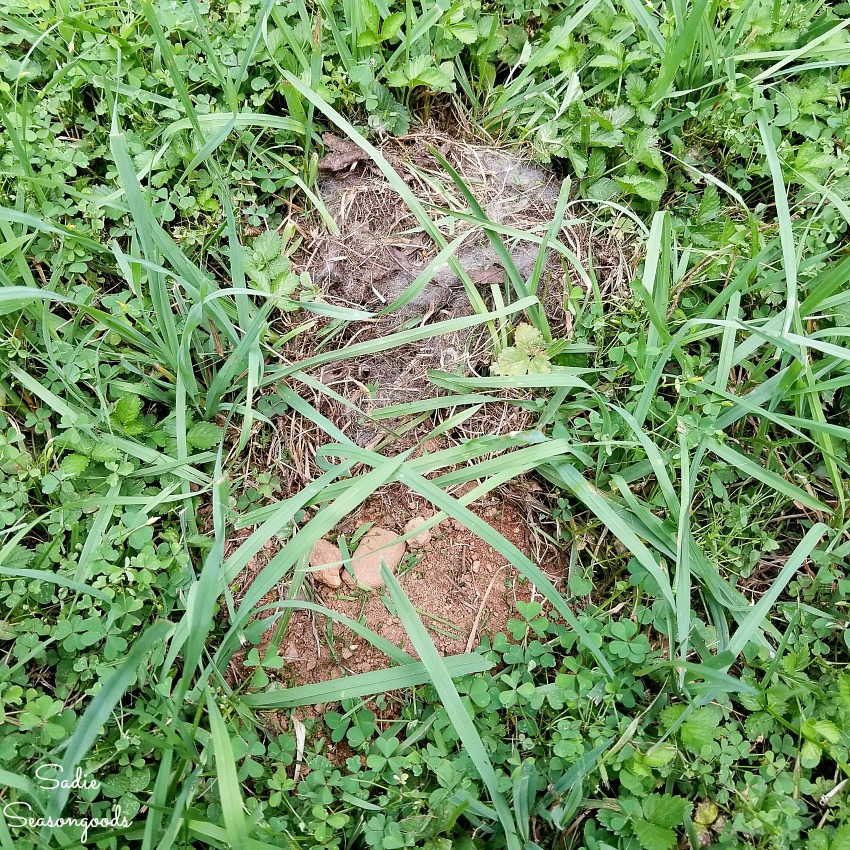
Either way, these rabbit nests are almost ALWAYS in the center of the yard, away from trees and protective shrubs. Why?
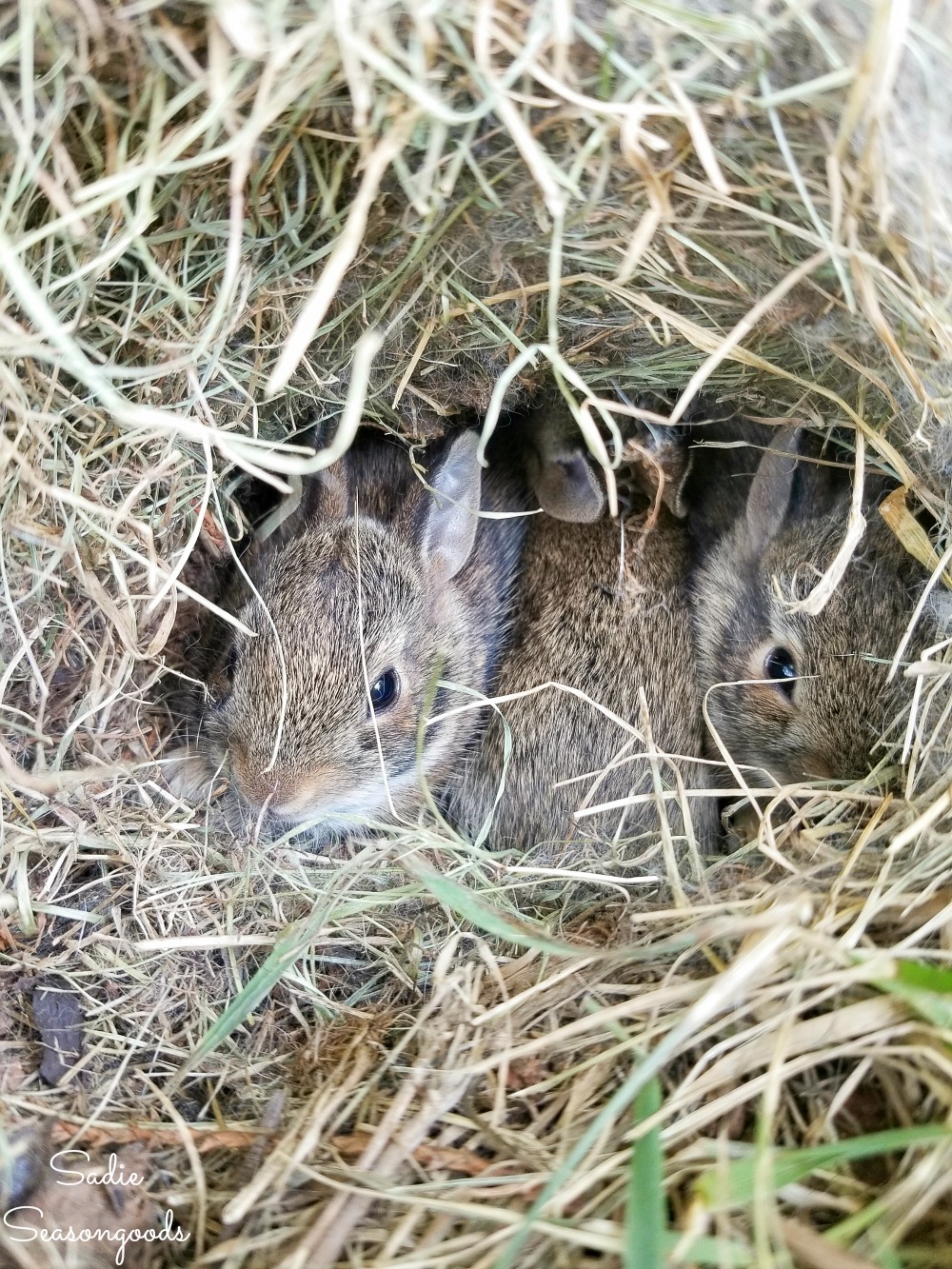
Because predators don’t like to hunt in the wide open. They can’t hide and lunge- so check your wide open spaces for bunny nests. You might just have these precious cherubs hiding under a patch of dried grass!
And to help out nesting wildlife, I even upcycled an old mattress spring to hold nesting material!
This specific nesting material includes Audubon-approved plant “fluff”, non-flea-treated cat fur, and dried grass from the yard.
Certified Wildlife Habitat: Sustainable Practices
As I mentioned previously, this is a newer requirement that didn’t exist when we certified in 2014. And it’s not one I can easily prove in photographs, other than noticing the amount of clover and other weeds in our lawn!
So, I’ll just show you more photos of wildlife in our yard!
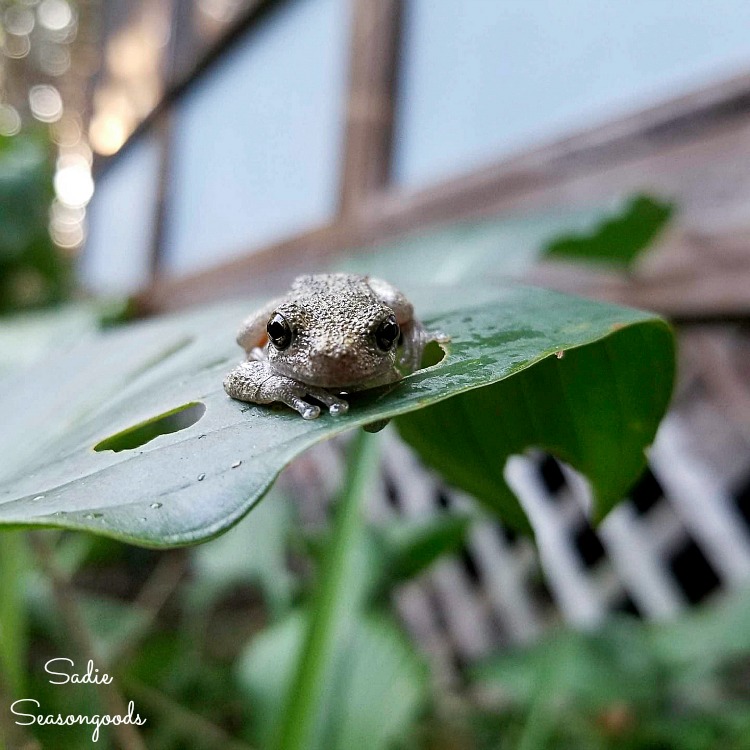
We don’t use a mass-fertilizing service for our lawn; use very few pesticides; use an above-ground sprinkler and a hose for watering the lawn; and mulch our beds naturally (i.e., no dyed mulch).
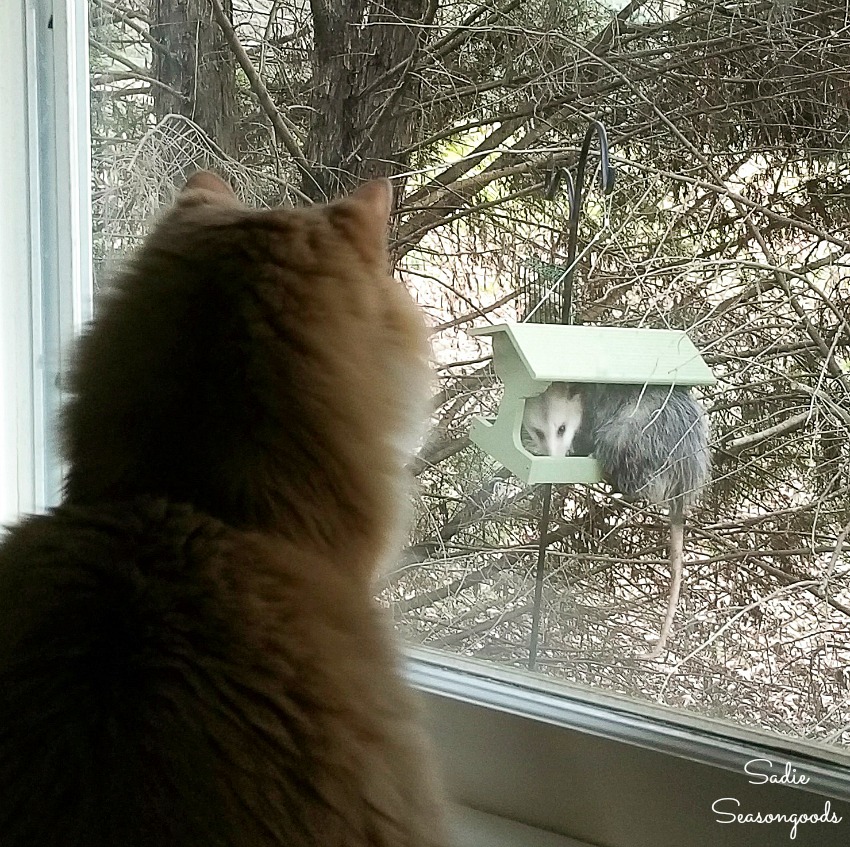
We’ve also talked repeatedly about getting a rain barrel and doing more active composting. Now I have even more reason to do so!
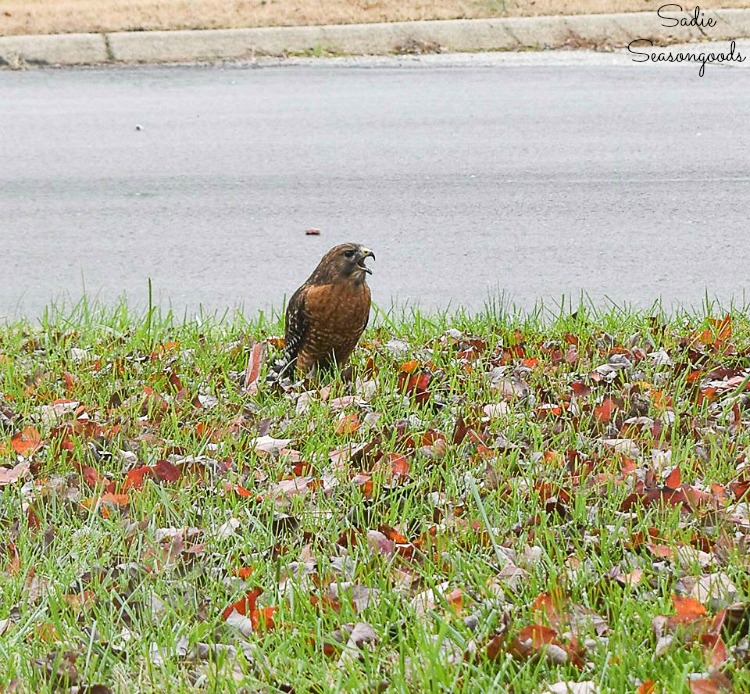
In general, I also plan to add a bat house to one of our larger trees, which will hopefully attract more bats to the yard. They do SUCH a good job of eating mosquitoes, which we have a lot of each summer.
I also want to make a bee house and create more butterfly habitat, as well.
How to Designate Your Yard as Certified Wildlife Habitat
Once you’ve created or added enough elements to your yard, you can apply for the designation of Certified Wildlife Habitat through this link here. There’s a $20 processing fee, but you will receive a certificate and placard, as well.
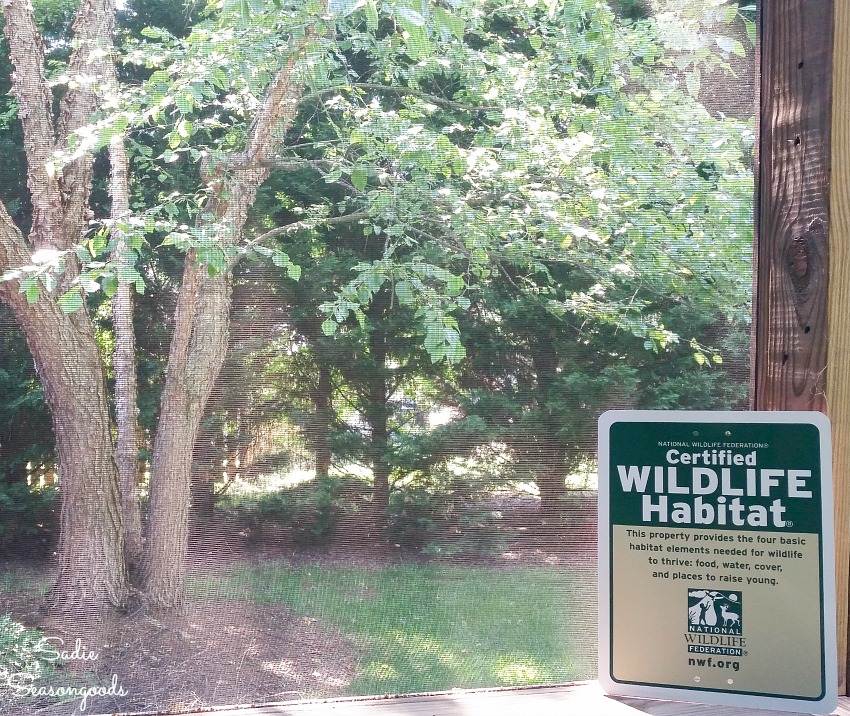
Looks like the sign design has changed over the years, too!
Either way, this would be SUCH a fun process to do with the kids or grandkids. Especially if you are stuck at home and homeschooling for the time being! And what a wonderful way to celebrate the 50th Anniversary of Earth Day, too.
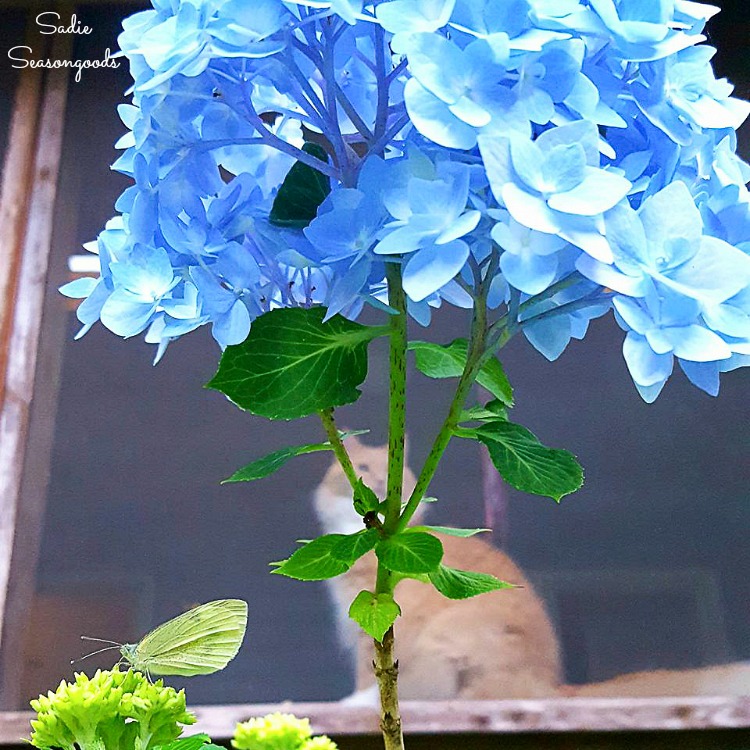
Plus, upcycling and garden projects go hand-in-hand. The sky is truly the limit!
Craft on!
S
Want to be notified when I publish my next upcycling project tutorial?
Join me on Social Media:
PIN ME!
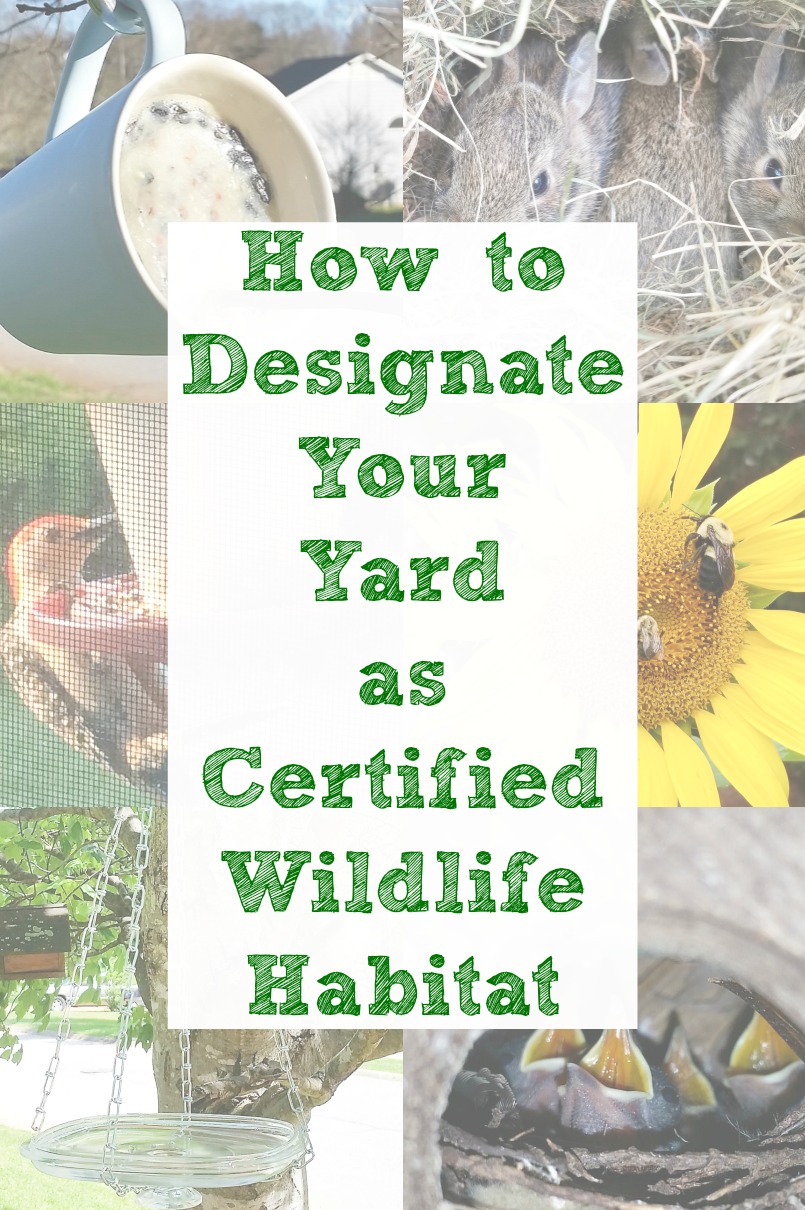
Sarah Ramberg is the owner of Sadie Seasongoods, a website that celebrates all things secondhand. From upcycling ideas and thrifted decor to vintage-centric travel itineraries, Sadie Seasongoods is a one-stop shop for anyone who loves thrifting and approachable repurposing ideas. Sarah is also the author of “Crafting with Flannel” and has been featured in numerous media outlets and magazines.
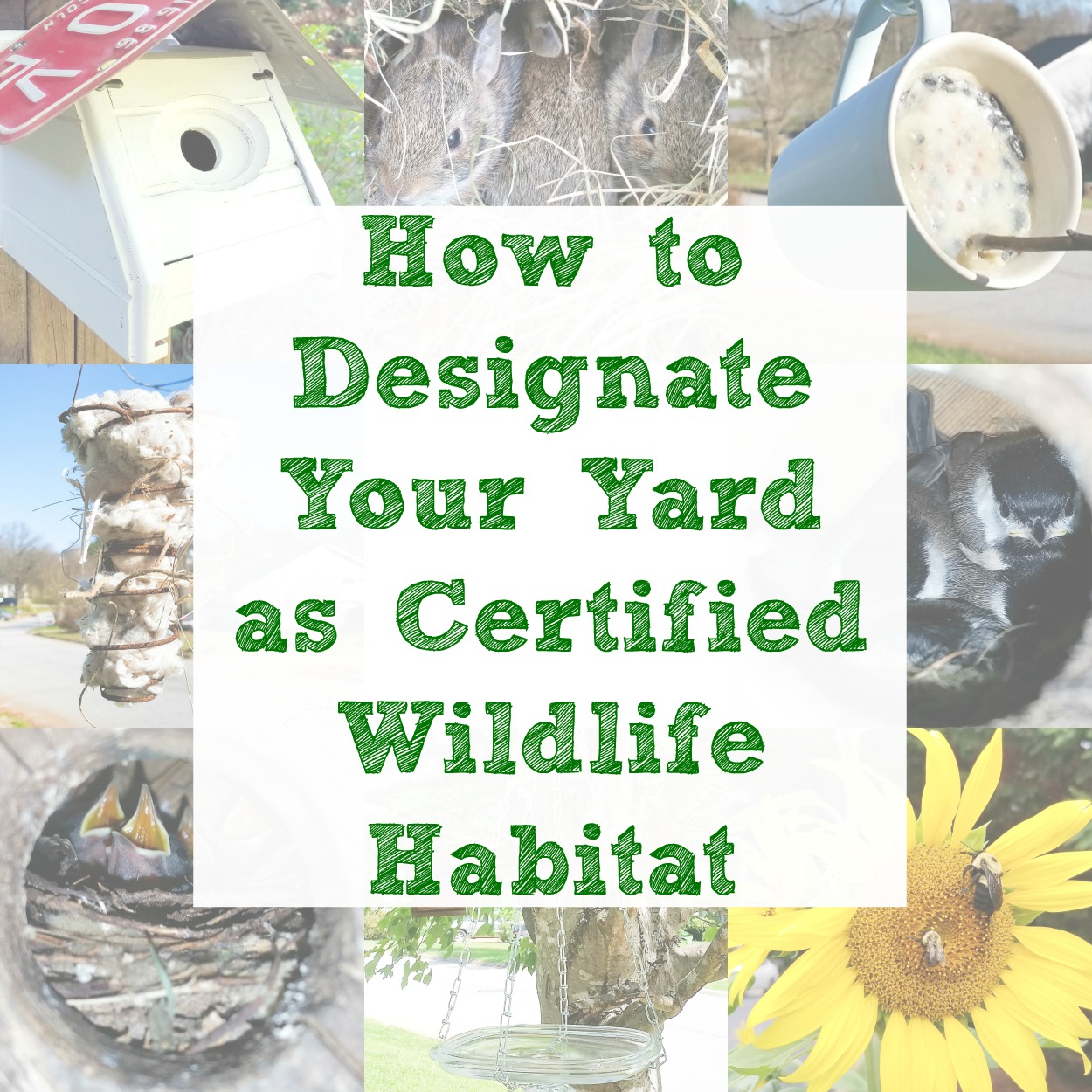

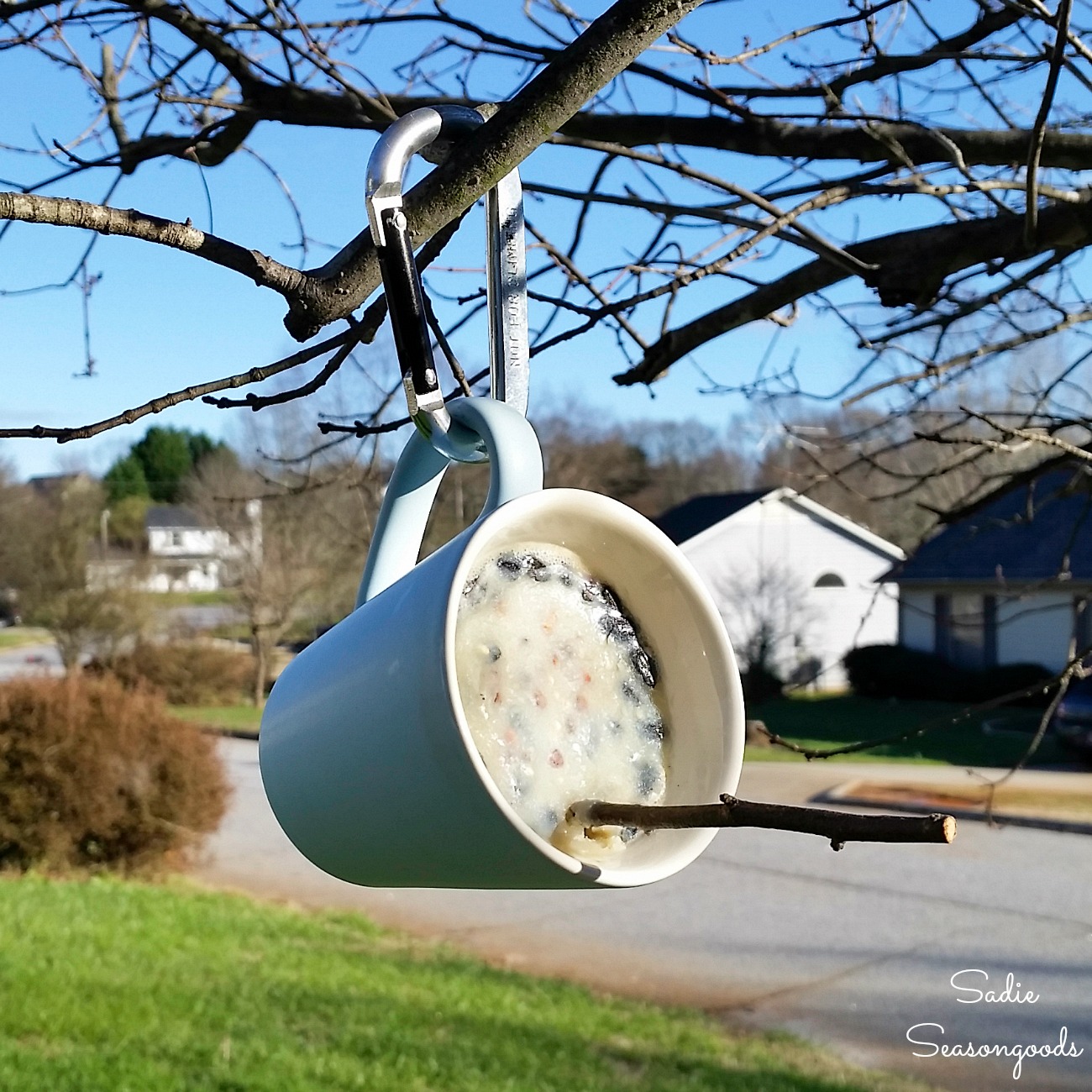
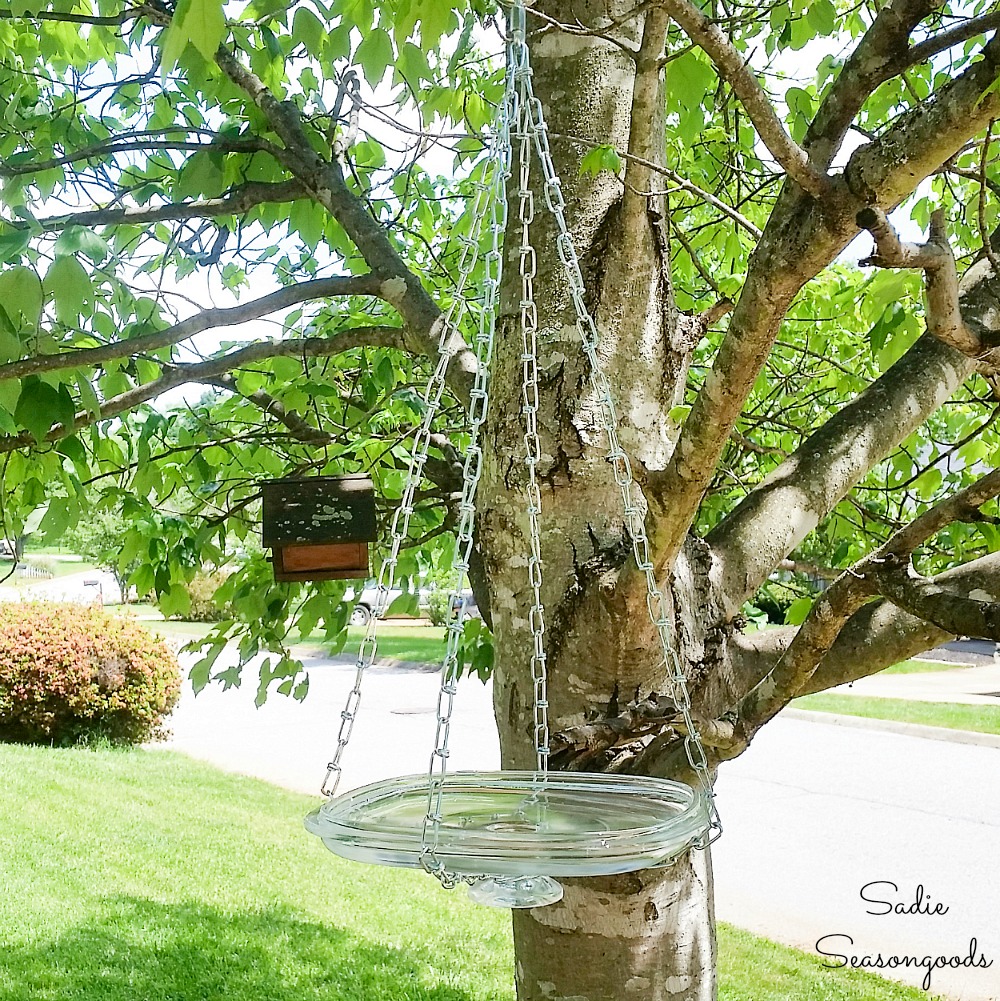
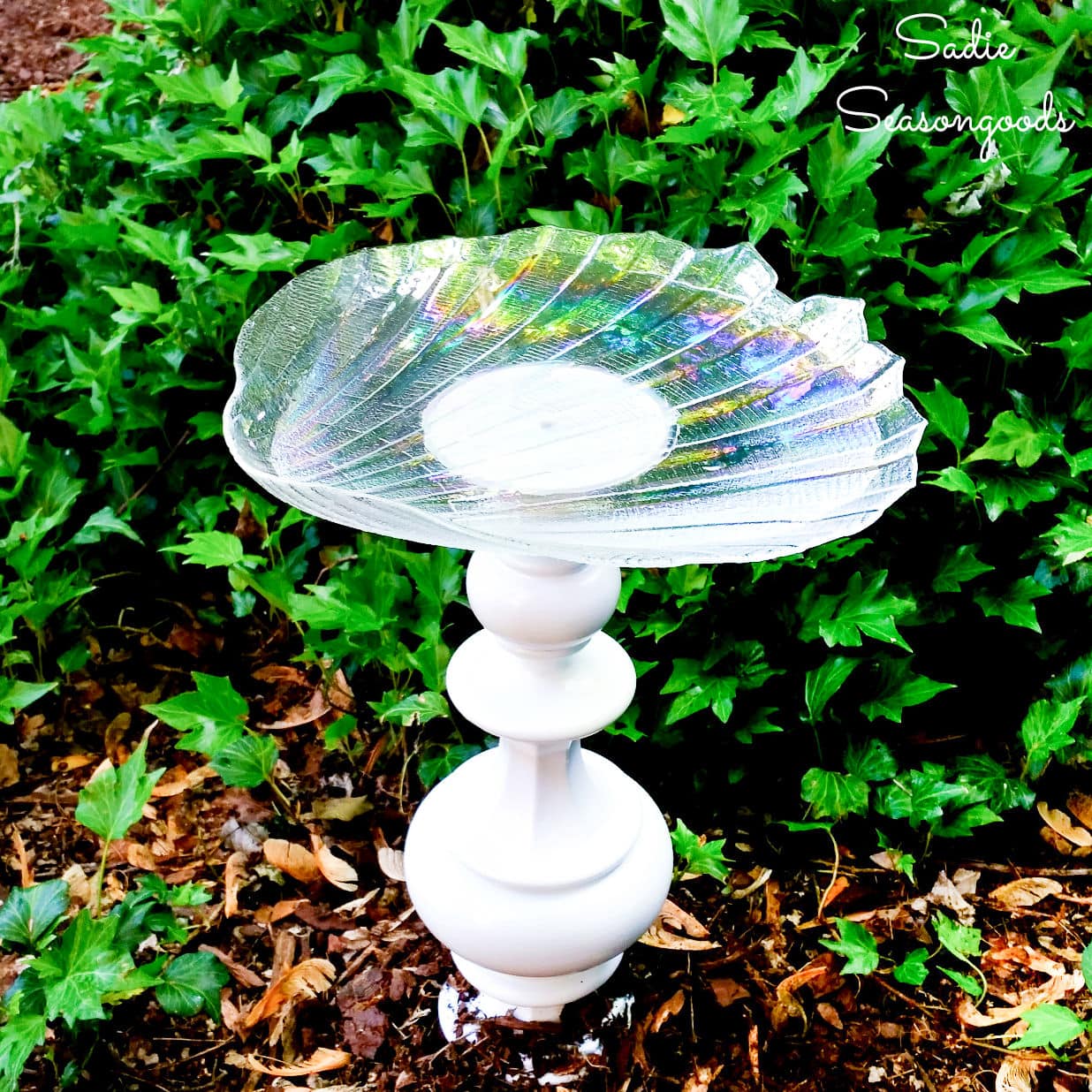
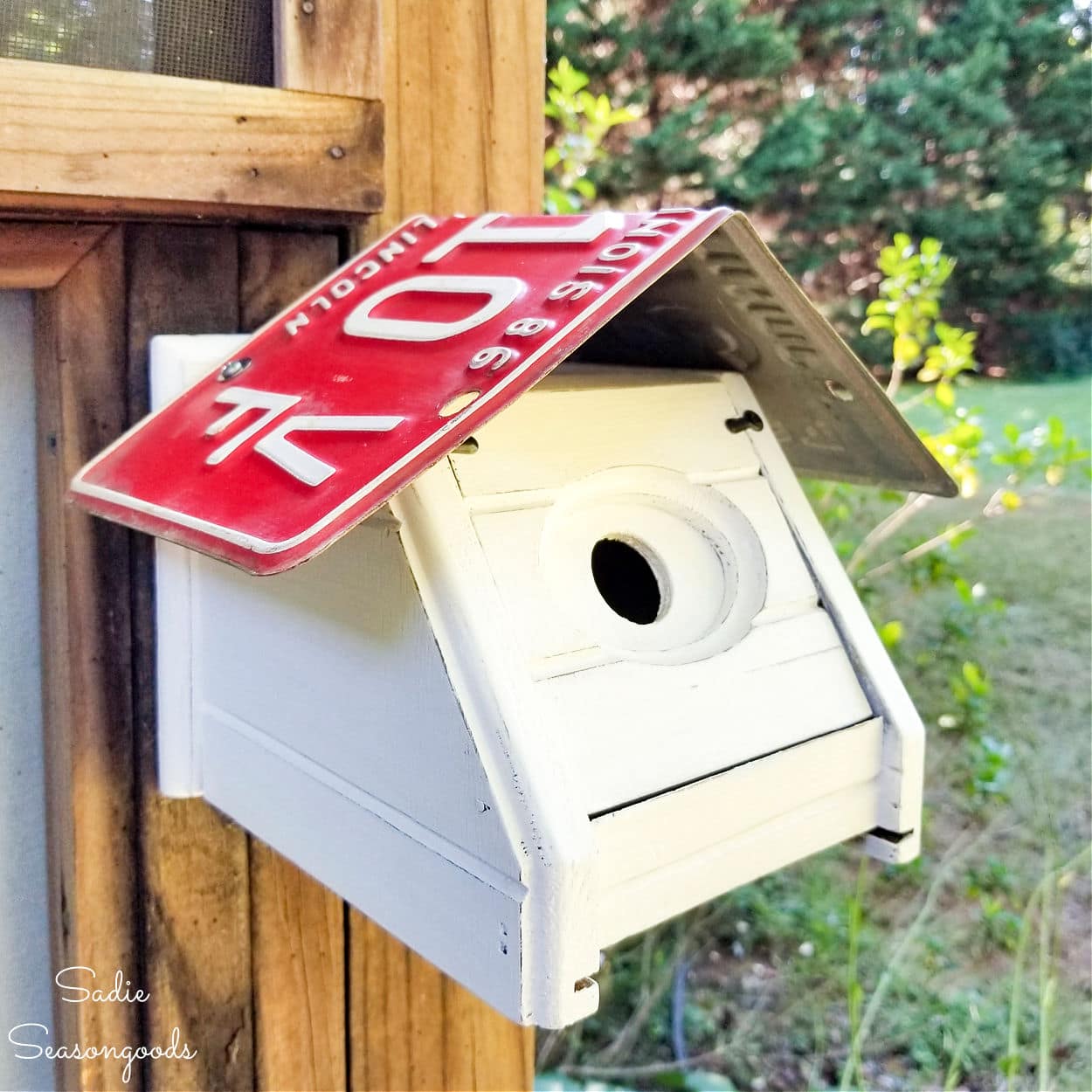
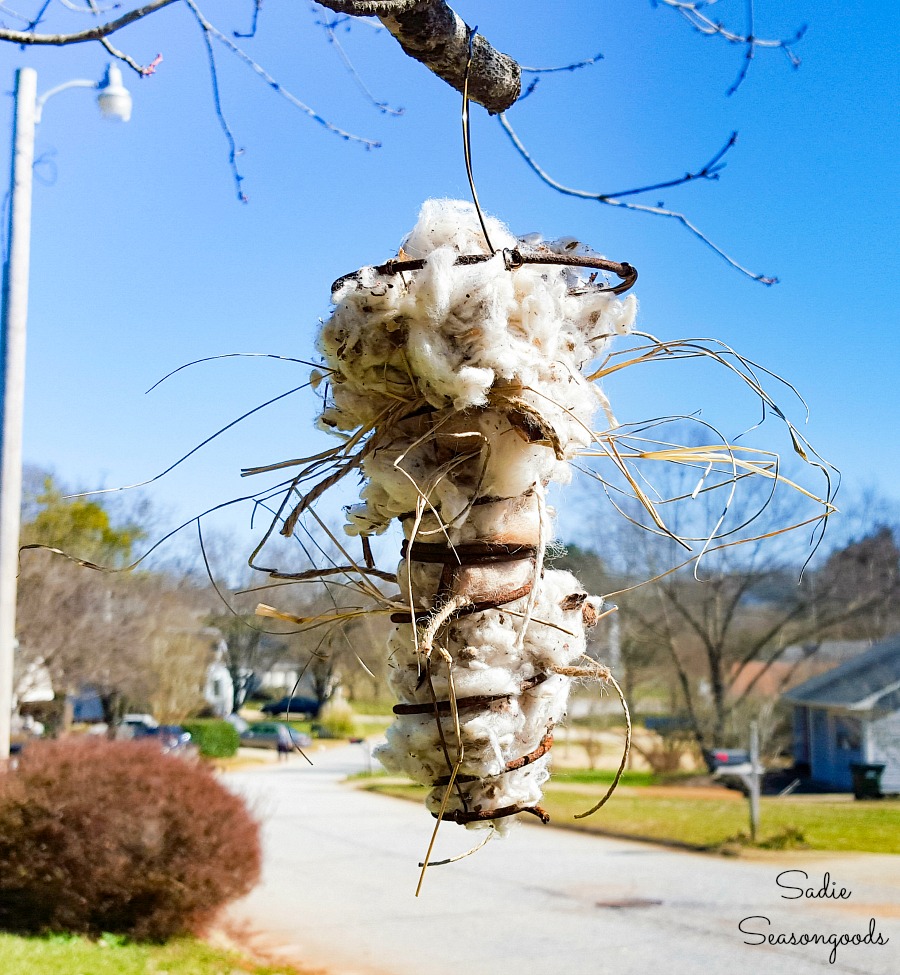




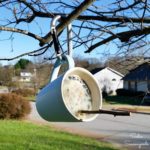
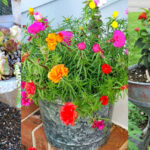
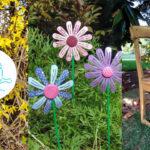
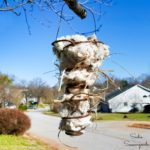





My yard may be considered that! I have all of the listed. I also have a catio for my cats to enjoy views without endangering birds and such.
Yes!! We have a large screened-in porch for our cats (only one uses it) to enjoy the wildlife.
LOVED this post! Beautiful photos and very inspiring. We live in the country, along a small shallow river and have lots of wildlife. Some of your projects have given me some ideas to “upgrade” a few of our bird houses, feeders, etc. Good luck with your bat house! We put one up about 5 years ago and although I followed the instructions to a “T” (location, height, colour), no one took up residence. And there are bats here – we see them (one in our attic a few years ago….thankfully just the one!) I look forward to hearing if you are successful in attracting them – fingers crossed!
Did you put guano in the bat house initially to attract them? I’ve heard that’s the only way they’ll ever check it out!!
I love your yard! Thank You for sharing and all your useful tips! I love birds and love to feed them, but with Mr. Bear coming for visits starting in early spring it does make it difficult!!! He broke into our shed last summer, somehow he knew i had seed in a Rubbermaid container that I had forgotten about?? I now keep all seed in my basement!
WOW!! We have black bears in our area, too, but so far, none have visited our yard that I know of. They are SO smart, too- I keep my seed in a big Rubbermaid tote in the garage. Here’s hoping that’s good enough!
I loved this post Sarah! I have a couple of birdbaths. One I can see from my dining room (where I have been working from home every day) and one I cannot see. The birds and squirrels use the one I can see all the time so I assume they are using the other one too. I have a bird feeder as well and a HUGE maple tree. I would love to have some bird houses that actually get used. I’ve never had a bird use a house I have in my yard. Any tips there?
Tania
What kind of birds do you normally see in your yard? I ask because different birds like different houses and they have size requirements that may preclude them from using houses. For instance, we have a LOT of wrens and chickadees- and they use houses with really small entrance holes. And they’re cool with houses that hang on a tree and may sway a little in the wind. But our bluebirds ONLY use a larger house (with larger entrance holes) that is on a post in the ground. I have also hung feeders near the houses- so maybe that would help?
My question doesn’t totally pertain to the post, but I am asking anyone and everyone for advise on my issue. My neighborhood has what I believe to be a mildew problem, (exp. my peonies come up, bloom, and then they get white stuff and dry completely out to brittle sticks, other plants as well). Any wisdom as to how to keep it out of my yard?
Thanks.
Dixie
Oh my goodness, Dixie, I’ve never heard of such a thing! I’m so sorry you are dealing with that- I wish I had some advice for you, but I’m afraid I don’t.
Thanks for sharing these fabulous/cute creatures, and the different feeders/bird houses. However, for me, I know longer have bird feeders/houses, because where we are located, our last bird feeders invited lot of ducks, which = lot of poop. What a mess!. never again. But thanks for sharing. Stay safe and healthy
Oh, gosh, I’ve never had that problem (no waterbody near our house, so no waterfowl), but I can definitely see how that would be a problem!
I live in Australia and have been a thrifter ( we call them Op Shops in Australia) since I was 14 when a friends older sister showed me the great clothes available there. Thank you for your fabulous and interesting posts and sharing your projects. I love making things and you regularly inspire me. I am always excited to see an email alert about a new post and you have such a beautiful friendly happy face, more power to you. Happy days 🙂
Thank you so much, Bren, you brought a huge smile to my face!! I hope you are doing well after all the devastating fires.
Have enjoyed your repurposing projects and then this post about promoting wildlife in your yard.
HOWEVER, I understand bloggers need to have ads to generate income but cannot understand how you can allow ads for harmful herbicides on your blog! Do you not get to review what these companies will be posting beforehand?? Just totally wrong!
Pat, it is clear that you do not understand how ads work. Every single person that visits my blog sees different ads. The ads are user-driven based on your previous internet history- items you have researched on Google, items you have shopped for and purchased, websites that you frequent, etc. I’m sorry you are so angry, but please do not accuse me of something I am not doing whatsoever. It is completely uncalled for.
I have 3 dogs so probably not too safe for ground dwellers, but I do have a chipmunk who visits my multiple bird feeders, many wonderful birds ( I always have my bird book close at hand!) and of course the squirrels! My squirrel population is exploding because I feed year round. Thank you for this great article and pics
Great ideas; I need to be doing more; my crows eat well from my compost pile! This week’s amusement was Dutchess, the tortoisehell cat, sitting on the front hall rug watching the daring red squirrel on the top step just 3 feet away–not counting the French door glass!